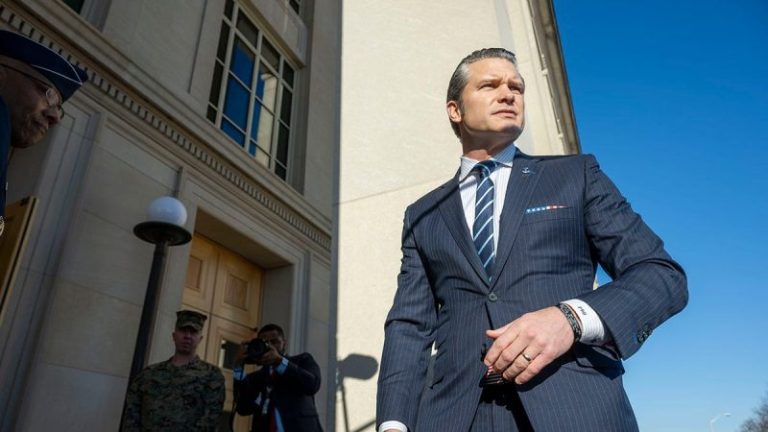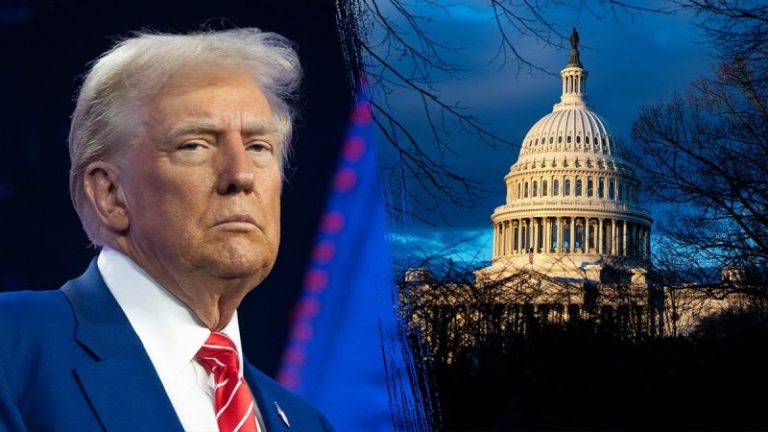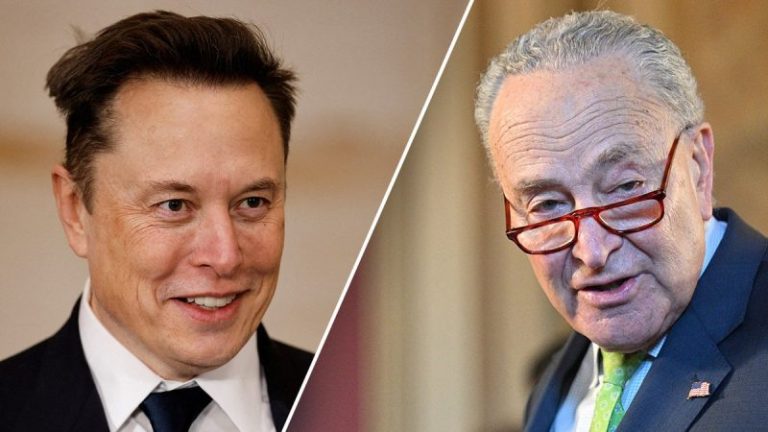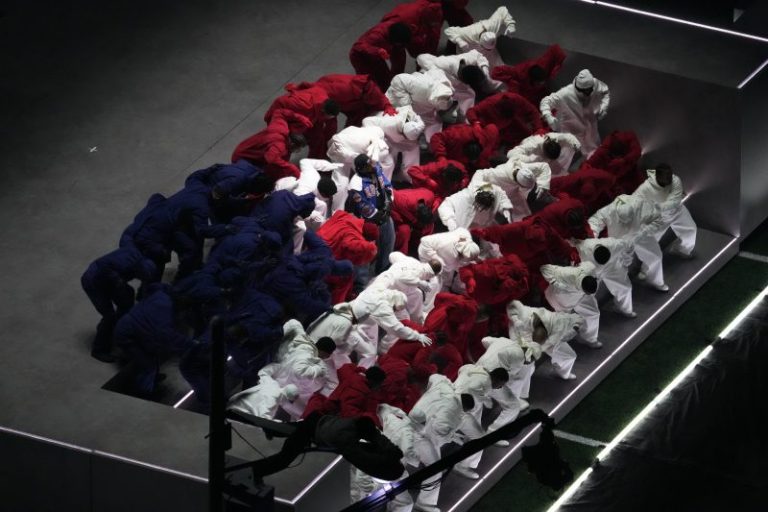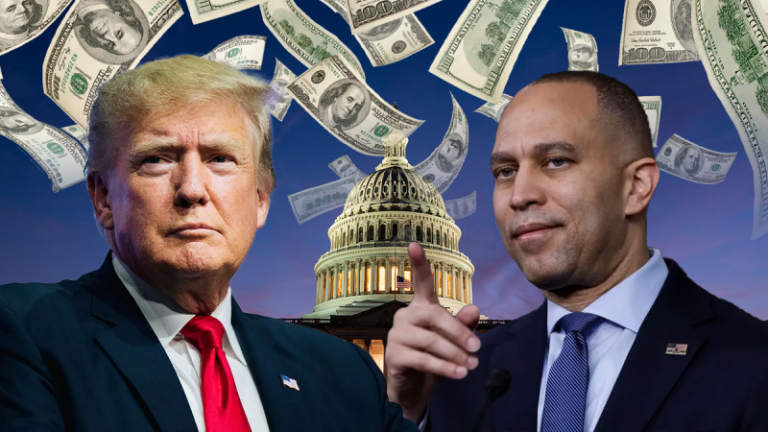President Donald Trump is getting what he wants.
Specifically, who he wants to serve in his administration.
The nomination of former Rep. Matt Gaetz, R-Fla., for attorney general last November?
That was a lifetime ago. Pushed out. Withdrawn. Unconfirmable. Whatever you want to call it.
The Senate has already confirmed at least one nominee whom political experts deemed as potentially unconfirmable a few weeks ago: Defense Secretary Pete Hegseth.
Hegseth skated through to confirmation with three GOP nays. But Vice President JD Vance broke a tie. It was only the second time in U.S. history that the Senate confirmed a Cabinet secretary on a tiebreaking vote by the vice president.
And by the end of the week, the Senate will likely confirm two other controversial nominees who at one point seemed to be a stretch. The Senate votes Monday night to break a filibuster on the nomination of Tulsi Gabbard to serve as Director of National Intelligence. Her confirmation vote likely comes Wednesday. After that, the Senate likely crushes a filibuster on the nomination of Robert F. Kennedy Jr. to serve as Health and Human Services Secretary. The Senate could confirm Kennedy by late Thursday.
It was unthinkable in November that Trump may be able to muscle through certain nominees. But this is a confirmation juggernaut. Yes, challenges await former Rep. Lori Chavez-DeRemer, R-Ore., who’s up for Labor Secretary. Some Republicans believe Chavez-DeRemer is too pro-labor. And the Department of Education may not be around long enough for the Senate to ever confirm Education Secretary nominee Linda McMahon. But so far, Republicans are sticking together.
Many Senate Republicans aren’t willing to buck the president. They believe the GOP owes its majority in the House and Senate to him. So they’re willing to defer to Mr. Trump. Moreover, some Republicans worry about the president hammering them on Truth Social or engineering a primary challenge against them. Or, perhaps just pressuring them.
Groups aligned with the president went after Sen. Joni Ernst, R-Iowa, late last year after her initial meeting with Hegseth. Ernst served in the military and is a sexual assault survivor. In an interview on Fox, Ernst suggested she wasn’t on board with Hegseth yet and wanted ‘a thorough vetting.’ But weeks later, Ernst came around and gave Hegseth the green light following a second meeting.
Sen. Todd Young, R-Ind., dodged reporters’ questions in the hallways for several days about his stance on Gabbard.
‘We’re not taking any questions!’ an aide hollered brusquely as the senator tried to evade the Capitol Hill press corps in the Dirksen Senate Office Building.
The same thing happened the next day.
‘Sorry, we’re not taking questions today. Sorry guys, we’re not taking questions today. Thank you though. Appreciate it,’ said an aide as Young maneuvered through the halls.
Young didn’t tip his hand on Gabbard until the Intelligence Committee prepared to vote on the nomination and send it to the floor. Young released a letter from Gabbard where the nominee apparently allayed the senator’s concerns.
‘There was certain language I wanted her to embrace,’ said Young.
In particular, he wanted Gabbard to state she wouldn’t push for a pardon for spy Edward Snowden.
Gabbard once advocated that a pardon was in order for Snowden – even though he made off with perhaps the biggest heist of U.S. intelligence secrets of all time – and fled to Moscow.
The committee then voted 9-8 to send Gabbard’s nomination to the floor with a positive recommendation toward confirmation.
What made the difference to Young?
He spoke with President Trump. He spoke with Vance. He even spoke with Elon Musk.
‘Was there any implication that there would be recriminations if you voted a different way?’ asked yours truly.
‘Never an intimation,’ said Young. ‘I think something the American people don’t understand is that this process sometimes takes a while.’
He argued that obtaining reassurances followed the process that ‘our Founding Fathers wanted people like myself to’ do.
The road to a prospective confirmation for RFK Jr. isn’t all that different.
Sen. Bill Cassidy, R-La., is a a physician and chairs the Senate Health Committee. After Kennedy’s hearing with that panel, Cassidy signaled he wasn’t prepared to support the nominee yet and wanted to talk with him over the weekend. Cassidy was perplexed by RFK Jr.’s stance on vaccines. But Cassidy was in RFK Jr.’s camp when it came time for the Senate Finance Committee to vote on the nomination a few days later.
‘Mr. Kennedy and the administration committed that he and I would have an unprecedentedly close, collaborative working relationship if he is confirmed,’ said Cassidy. ‘We will meet or speak multiple times a month. This collaboration will allow us to work well together and therefore to be more effective.’
Cassidy’s support dislodged RFK Jr.’s nomination from committee and sent it to the floor. That’s why, like Gabbard, he’s on cruise control for a confirmation vote later this week.
What made the difference in salvaging these nominations which once teetered on the edge?
Multiple Senate Republicans point to their former colleague, Vance.
Vance has worked quietly in the shadows, leaning on his relationship with senators, to convince skeptical Republicans into a comfort zone with controversial nominees. The Trump Administration saw how quickly the nomination of Matt Gaetz evaporated last fall. There was worry that robust GOP pushback could jeopardize an entire slate of nominees.
So has Vance deployed soft power with senators? Or has he dispelled concerns through brute force? Judge for yourself.
Consider what the vice president said about the role of senators during an interview on Fox last month:
‘You don’t have to agree with everything Bobby Kennedy has ever said. You don’t have to agree with everything that Tulsi Gabbard has ever said,’ said Vance of Republican senators. ‘You are meant to ask, ‘Do they have the qualifications and the character to do this job?’ The person who decides whether they should be nominated in the first place, he was the guy elected by the American people. That’s President Trump.’
The Senate has confirmed 13 of Trump’s nominees so far. Eleven obtained bipartisan support. Secretary of State Marco Rubio marshaled the votes of all 47 senators who caucus with the Democrats. Interior Secretary Doug Burgum secured 27 Democratic yeas. Attorney General Pam Bondi scored one Democratic yes. That was Sen. John Fetterman, D-Penn.
But Budget Director Russ Vought and Hegseth failed to win over any Democrats. That’s probably the same case with the upcoming confirmation votes for Gabbard and Kennedy. Not only do Democrats object to these nominees, but their base is compelling major pushback after the administration shuttered USAID and DOGE is mining for cuts – without congressional assistance.
Some Democrats, like Sen. Tim Kaine, D-Va., believe that presidents deserve to have a cabinet of people they choose – unless they are egregious nominees or unqualified. But now Democrats are flexing their muscles. That’s why the Senate was in all night leading up to the confirmation vote of Vought. Democrats will likely require the Senate to burn all available time on Gabbard and Kennedy.
But Trump is getting what he wants when it comes to confirmations. Most Senate Republicans are unwilling to push back. And Democrats can make the Senate run the clock and speak out against nominees. But, proper or not, there is now a confirmation juggernaut for the president in the Senate.
This post appeared first on FOX NEWS

